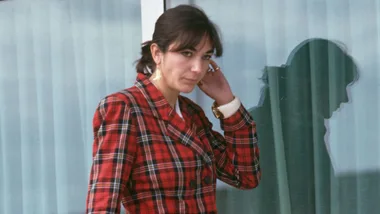Almost half of young women feel unsafe walking alone after dark in their communities and one in five young females report concerns about personal safety according to Mission Australia’s Gender Gaps – Findings from the Youth Survey 2018 report released today. The new report pinpoints stark differences between female and male responses to the Youth Survey 2018, highlighting that more females than males were concerned about almost every topic in the survey.
A much higher proportion of young females than young males reported feeling unsafe or very unsafe in their communities when walking alone after dark (46.6% compared with 18.1% of males). Young females were also more likely to report personal safety as a concern than their young male peers (21.6% compared with 14.3%). Twice the proportion of young females also reported security/safety as a potential barrier to moving out of home in the future compared to young males (28.3% compared with 14.2%).

The data about young people aged between 15 and 19 comes from almost 30,000 responses to Mission Australia’s Youth Survey 2018.
CEO James Toomey said it’s time we listened to young female’s heightened concerns around personal safety and take urgent action to ensure all young people feel safe to move freely in their communities.
Mr Toomey said: “The obvious lack of trust and concern about safety has a major impact on young female’s public engagement and participation, their access to spaces and services, as well as their ability to move freely in public places. It’s very concerning that young females feel unsafe in public places in Australia, both during the day and after dark, and consequently feel less connected to their communities than their male peers.”

“We need to put a spotlight on what young women are telling us. This is not ok, young females should not have to tolerate feeling unsafe as they go about their day to day lives. Young women and men should be able to participate in activities and connect with their friends in their communities with equal confidence.
“We should not accept that young females are feeling such low levels of safety as the norm, and we need to ensure young people can thrive in their communities. We’d like to see increased investment in place-based initiatives which help to strengthen local communities. With more collaboration between individuals, community organisations and governments, we can work together to create safer communities and improve outcomes for young people. Of course, these approaches should be co-designed with young people to ensure they meet the unique needs and preferences of both young females and young males.”
Mr Toomey continued: “Overwhelmingly, young females are telling us that they’re more concerned about a range of issues. We must heed what they’re saying and ensure that they, and their young male peers, have adequate access to the right help when they need it.
“We need to see more investment in evidence-based mental health and wellbeing programs and holistic supports through schools and community services for young people that meet a range of needs during adolescence, including help with school or study problems and coping with stress.
“We also need to closely consider the types of messages we are giving our young people in terms of their safety, school stress and mental health. So we can ensure that, regardless of their gender, young people feel safe and supported to fulfil their potential and achieve their future goals.”










